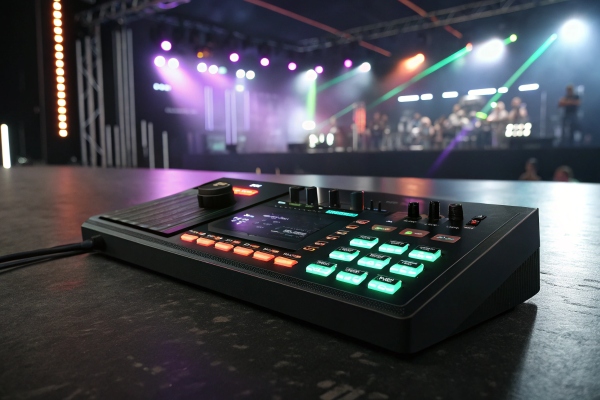
When selecting a stage lighting supplier, you need to balance price, quality, and reliability. Getting the right supplier can make or break a successful event.
Choosing the right stage lighting supplier is crucial. Factors like quality, technical support, and timely delivery should be top priorities.
This guide will walk you through the essential criteria for selecting a supplier who can meet your needs reliably.
How Can You Verify Supplier Certifications?
Fake certifications are a common issue in stage lighting procurement.
Authentic certifications like RoHs or CE1 are crucial for compliance and product quality assurance.
Understanding certification validity2 can prevent costly compliance and quality issues.

How to Spot Fake Certificates?
- Check Registries3: Verify RoHs or CE numbers through official databases.
- Third-Party Audits4: Use independent organizations to inspect supplier credentials.
- Red Flags5: Inconsistencies in fonts, logos, or document details may indicate forgeries.
By confirming certificates, you protect your business from legal and operational risks.
How Can You Avoid Supply Chain Delays?
Delays can derail events, leading to lost revenue and credibility.
Efficient suppliers provide transparent timelines, reliable logistics, and contingency plans. Learn more about efficient supplier strategies6.
Find out how to ensure smooth delivery for your orders by exploring best practices for supply chain logistics.
Tips to Minimize Delays
| Key Action | Why It’s Important |
|---|---|
| Set Deadlines | Enforce penalties for late shipments. |
| Inspect Inventory | Confirm stock levels before placing orders. |
| Use Local Partners | Supplement imports with local distributors. Learn more about local supply chain solutions7. |
Build clauses into contracts to ensure timely delivery and reduce risks. Explore contractual safeguards to protect your business from supply chain disruptions.
How Can You Evaluate Technical Support?
Technical issues during events can harm your reputation. Reliable support ensures seamless operations.
A supplier with strong technical expertise resolves problems quickly, minimizing downtime.
Learn how to evaluate a supplier’s responsiveness and expertise.

How to Test Supplier Support?
- Ask Specific Questions: Query about DMX compatibility and software integration. Explore DMX compatibility basics8.
- Request Demos: Evaluate products in real-time scenarios.
- Gauge Responsiveness: Measure response times to technical inquiries.
Partnering with a responsive team ensures peace of mind during high-pressure situations.
What Performance Metrics Should You Prioritize in Stage Lighting Equipment?
Technical specifications directly impact equipment suitability and audience satisfaction.
Focus on core parameters like lumens, beam angle, and DMX functionality to meet event needs. Learn about essential stage lighting specifications9.
Discover which specs matter most for superior stage lighting.
Must-Have Specifications
| Feature | Description | Importance Level |
|---|---|---|
| Beam Angle | Determines light coverage. | High |
| Lumens | Measures brightness output. | Critical |
| DMX Channels | Controls advanced lighting effects. | Essential |
Ensure equipment aligns with your venue and design requirements.
How Can You Negotiate Better Pricing and Service?
Suppliers may hide fees or reduce post-sale support without proper agreements.
Clear contracts with detailed terms ensure transparency and accountability.
Stay tuned for practical negotiation tips to save money. Explore effective supplier negotiation tactics10.

Secrets to Negotiation
- Bundle Purchases: Discounts often apply to larger orders.
- Demand Guarantees: Secure warranties and service terms in writing.
- Benchmark Costs: Compare quotes to identify fair pricing.
Negotiate strategically to maximize value without sacrificing quality.
How Do You Ensure Equipment Compatibility with Your System?
Incompatible equipment leads to wasted investments and operational inefficiencies.
Suppliers should confirm their products integrate with your existing DMX controllers and systems. Learn how to evaluate DMX compatibility11.
Keep reading to prevent compatibility challenges.

Steps to Guarantee Compatibility
- Request Documentation: Obtain DMX libraries and manuals before purchase. Find DMX library resources12.
- Run Compatibility Tests: Use sample units to test systems.
- Avoid Proprietary Lock-Ins: Opt for open protocols over brand-specific setups.
Being proactive prevents integration challenges during critical events.
Conclusion
Choosing a high-quality stage lighting supplier means verifying certifications, ensuring reliability, and prioritizing performance metrics. With due diligence, you can secure exceptional equipment and support for your events.
-
RoHs and CE certifications ensure products meet international standards, offering buyers confidence in quality and safety. ↩
-
Understanding certification validity helps avoid compliance penalties and ensures supplier reliability. ↩
-
Checking registries allows direct verification of certification authenticity, reducing risks of dealing with counterfeit documents. ↩
-
Third-party audits provide unbiased evaluations of supplier credentials, strengthening procurement decisions. ↩
-
Recognizing red flags in documentation can help identify potential fraud and save time and resources. ↩
-
Explanation of efficient supplier strategies, detailing how transparent timelines, reliable logistics, and contingency plans help businesses avoid delays and maintain credibility. ↩
-
Explanation of local supply chain solutions, emphasizing the benefits of working with nearby distributors to reduce dependency on imports and prevent delays, as well as safeguards to encourage timely delivery. ↩
-
Explains DMX standards and their importance in product compatibility and integration. ↩
-
Highlights the key metrics (e.g., lumens, beam angle, DMX) crucial for selecting stage lighting. ↩
-
Offers strategies to secure better pricing and detailed service terms. ↩
-
Guides users on assessing product compatibility with existing DMX controllers and systems. ↩
-
Provides access to documentation for ensuring proper integration of lighting equipment. ↩


